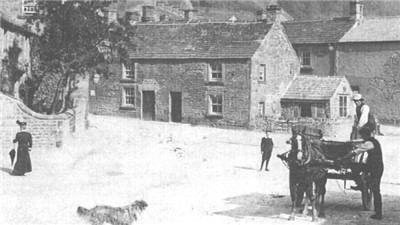8、The Village That Sacrificed Itself
自我犧牲的村莊
In 1665, a tailor from the village of Eyam in Derbyshire, England ordered cloth from London. When the delivery came, the village received much more than just cloth—it became infected with the plague, which was already laying waste to the capital. People started dying, but they knew the plague hadn’t spread to nearby villages. So, led by clergyman William Mompesson, the villagers decided to quarantine themselves, staying in the plague-stricken town to prevent the disease from spreading.
1665年,一位英格蘭德貝郡Eyam村的裁縫向倫敦訂購布料。當(dāng)貨物送達(dá)時(shí),這個(gè)村莊收到的遠(yuǎn)不止是布料——還有布料所染上的,在首都垃圾堆中蟄伏已久的鼠疫。人們開始死去,但是他們知道這瘟疫并未向鄰近村莊傳播。所以,在牧師William Mompesson的領(lǐng)導(dǎo)下,村民們決定自我隔離,駐留這被瘟疫擊倒的小村莊里以防止其繼續(xù)向外擴(kuò)散。

The quarantine began in June 1666. From that point onward, no one could enter or leave the village. Neighboring towns left food at designated places well outside of the village proper. Pre-quarantine, 78 died, and by the end of the plague, that number climbed to 256. Before the townspeople opened their village once again to outsiders, they burned furniture and clothing, hoping to eradicate any traces of the disease that might still lie dormant.
這場隔離行動(dòng)開始于1666年6月。從那時(shí)起,沒人可以出入村莊。附近諸村只能將食物留在該村外的指定地點(diǎn)。在隔離前已有78人死亡,在瘟疫結(jié)束時(shí),死亡人數(shù)攀升至256人。在村民們重新開放村莊與外界接觸時(shí),他們燒毀了家具和衣物,希望徹底銷毀任何可能殘留瘟疫的遺跡。
The sacrifice was a success. None of the neighboring villages had a single case of the plague. Mompesson lost his wife Katherine to the disease, but he himself survived.
這場犧牲成功了。鄰近村莊無一人染上鼠疫。Mompesson 牧師在瘟疫中痛失愛妻,但自己僥幸存活。











